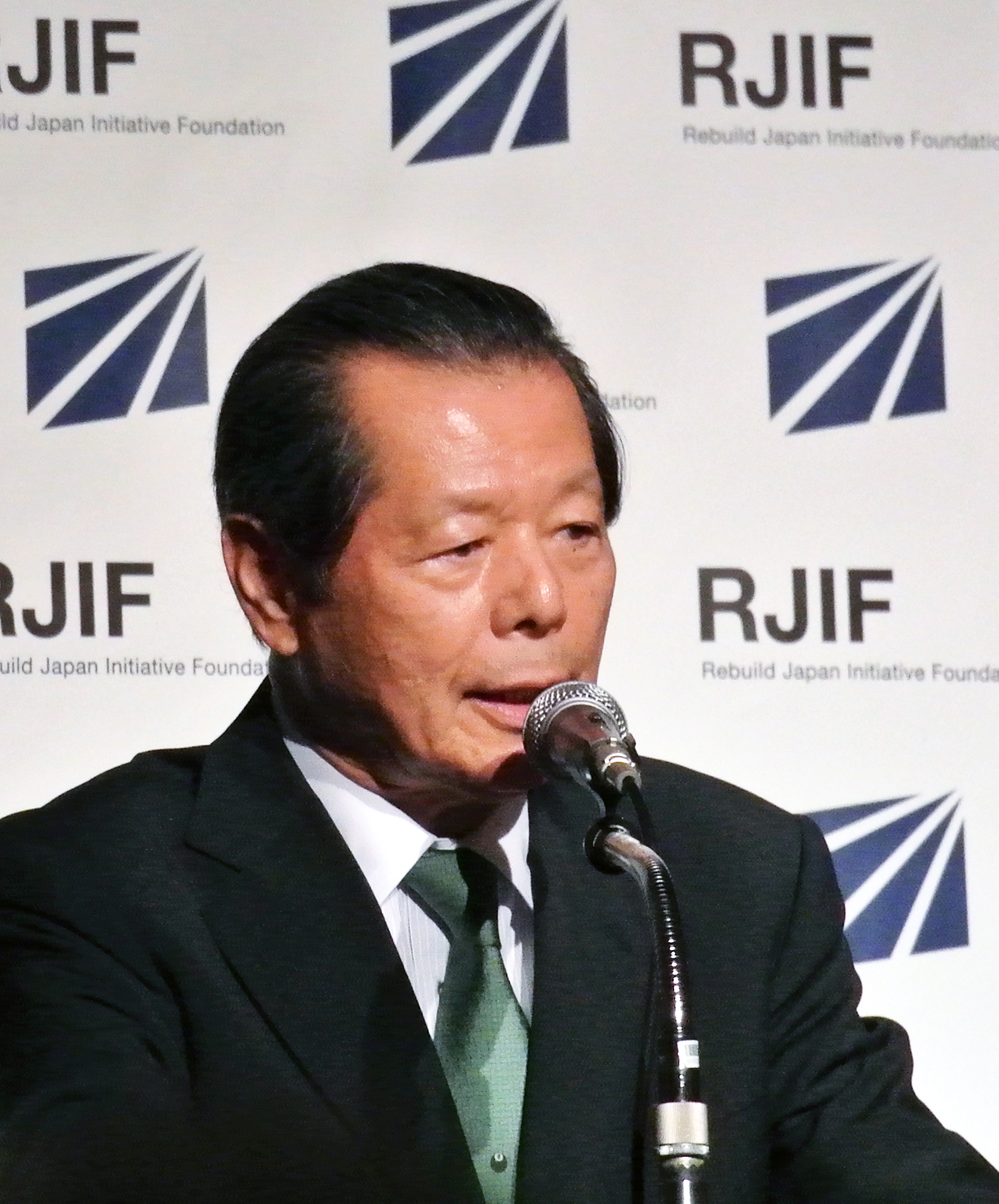New Plan for Reforming the Japanese ArchipelagoPlan for Remodeling a Shuttered Shopping Street

YAMAMOTO Kazumune, chief producer of News Division at Yomiuri Telecasting Corporation
Shuttered shopping streets have become known as a symbol of a declining regional economy. During the period of high growth, these shopping districts were regarded as the centers of the respective cities or towns, where a plethora of lively activities took place. Now, they are seeing customer and visitor numbers gradually fall due to the trends of the times such as the opening of large-scale commercial malls, changes in lifestyles and business customs, and the aging population along with the low birthrate, as well as the burst of the bubble economy. It is not just a local phenomenon that is occurring in some shopping streets, but an ongoing issue that may result in the real decline of municipalities. According to a survey on the actual situations of shopping streets conducted nationwide by the Small and Medium Enterprise Agency in 2012, shopping districts that responded that they were prospering accounted for as little as one percent, while 76% said that they were declining or might decline, representing more than three quarters of respondents. What should be done to overcome this situation? By gathering information on the initiatives being undertaken to remodel shuttered shopping districts, we begin to understand the clues for restoring vitality, as well as the challenges.
Winners Face New Challenges — Bungotakata City, or the Town of Showa
The shopping street, with Kawara-roofed shops lined up along both sides, did not feature any roofed passages. What I saw in the front corners of the shops were items such as CRT-equipped TV sets, three-wheelers, and manual snow cone makers. A retro bus called a “bonnet bus” was moving through the street, and the shops were attracting customers with such retro items as croquettes and bean snacks. The area looked like a theme park featuring the Showa period (1926–1989), rather than a shopping district.
I was visiting Bungotakata City, Oita Prefecture, located in the northern part of the Kunisaki Peninsular. Today, the Town of Showa, which makes you feel as if you have slipped back in time, attracts more than 300,000 visitors every year and is recognized as one of the most notable winners. “What we found here, but not in other places, was the retrospective shopping street that had remained since a long time ago. It was a property that had been passed down from our ancestors. We wanted to pass it on to the next generations by building on the commercial businesses and tourism simultaneously.” (Noda Yoji, Chairman of the Chamber of Commerce in Bungotakata) They focused their efforts on ensuring that the retro ambiance would be felt everywhere, taking advantage of the adversity of an outdated street.

The town of Showa in Bungotakata City, where tourists are enjoying riding on a retro bus
The target customers were tourists. They renovated a warehouse of agricultural products that was built around 1935 for the purpose of storing rice, changing it into a symbolic location in the shopping district with a display of retro figures and signboards. The collection of valuable items that caused me to reminisce about the Showa period was contributed by the citizens.
The shopping street was gradually declining due to the impacts of the decreasing population and the operation of large-scale commercial malls, although it was the busiest spot on the Kunisaki Peninsular until the early 1960s. The Town of Showa opened in 2001 in an effort to make the street as vibrant as it was in the good old days. The number of visitors, which totaled 25,000 per year when it first opened, increased to more than 200,000 in just two years. As a result of the number of tourists visiting the district increasing as expected, the town achieved miraculous success, recording upwards of 400,000 visitors in 2011.
According to the Daigin Economic and Management Institute, a local think tank, the economic effects generated until 2012 amounted to as much as 9.1 billion yen. Some shop owners said that they were happy because they were able to envision a future instead of just remaining pessimistic, while others even complained that they were so busy on Saturdays and Sundays that they rarely had time to have a rest. The shopping street, which was revitalized to a degree that surpassed its busiest days, became the symbol of vitality for Bungotakata City in terms of a local source of tourism.
That said, the number of tourists, which had kept increasing, began to show signs of a decline after 2011, the year when it peaked, recording no more than 340,000 visitors last year. With fifteen years having passed until this year, the growth depending on increases in the number of tourists started to show a decline.
As a result, they revisited what a shopping street should be. Bungotakata City set forth a policy that may be referred to as a return to the basics in the hope of “creating a flow of citizens who do their shopping in local stores every day.” (Kono Shinichi, Manager of the Department of Commerce, Industry and Tourism of the City) They implemented a new initiative to attract local families, spending 70 million yen on projects such as the renovation of the adjacent park by installing large-scale play equipment and laying full turf. “We will create a cycle for vitalizing a local economy centered on this shopping district because we cannot achieve a sustainable economy without an increase in the number of permanent inhabitants, especially young people.” They therefore positioned the shopping street as the core source of regional revitalization, which includes the achievement of an increase in the population as well. Whether it is the right answer still remains to be seen.
Shortage of Successors Remains a Serious Issue – Burakuricho in Wakayama CIty
The Burakuricho district, located almost halfway between Wakayama Station on the JR Line and Wakayama City Station on the Nankai Dentetsu Line, is said to have been the former center of Wakayama City, garnering 20,000 visitors per day forty years ago. The number of visitors today is 4,000 at the most. Looking at the area where the street becomes wider in the arcade, I realized the seriousness of depopulation most keenly. There was no indication of the bustle and vitality that had characterized the spot in the past. “We had a large department store and a supermarket, but they left. We had five movie theaters in the past, but now we have none. The situation continues to be very tough,” says Naruse Hagane, President of the Burakuricho Shopping Street Cooperative Association.
There is another issue that makes the people involved with the shopping districts even more concerned as they struggle to take effective measures to end the ongoing desolation. It is the shortage of successors. According to the survey on the actual situations of shopping streets, the closure of operations due to the advanced age of an owner or the inability to find a successor is by far the most-cited reason, accounting for 30%. For the most part, the vacancies of shops in the Burakuricho district can also be attributed to this issue. With the establishment of the Local Shopping Area Activation Act in 2009, programs such as interest-free financing were launched to help and support initiatives that were being undertaken in response to the needs of the inhabitants. Burakuricho, capitalizing on the program, raised 4.5 million yen for efforts such as the installation of resting spaces
and community spaces for citizens, the provisioning of support for starting a business or opening a store and the sale of local specialty items like Kishu ume plums. By doing so, they are seeking to find a clue for revitalization.
The Ideas and Actions of Young People Changed the town – Kamifurumachi, Niigata
Some shopping districts are succeeding in dealing with the changing generations, an issue that has been frustrating shuttered shopping districts nationwide. The Kamifurumachi shopping district in Niigata City is one such area. The district had developed as a town for pilgrims to Hakusan Shrine, which enjoys one of the largest numbers of worshippers in Niigata. However, one in four shops became vacant ten years ago, demonstrating a typical change into a shuttered shopping street. “After the establishment of a large-scale commercial complex in the suburbs, everyone chose to go there by car. So there were few customers on Saturdays and Sundays,” comments Sakai Yukio, the former Executive Director of the association for the promotion of the Kamifurumachi shopping street, looking back at the critical situation at that time.
Today, the street features 100 shops lined up along the highway for 500 meters, and enjoys a shop vacancy rate of only three percent. The key player who contributed to the revitalization is Sako Kazunari, the representative of Hickory03travelers, who is also a director of the promotion association.
Everything started when he opened a store to gain experience twelve years ago at the age of 24. He worked on the dissemination of information in an effort to let people know how many attractive shops there were, although the district did not even have the name of Kamifurumachi. Naming it Kamifurumachi, he made a map and organized events. Through these efforts, the town became known to people little by little. Encouraged whenever he heard visitors say, “This is a nice town,” he kept producing festivals, events and products, all originating from the shopping street, while, as an effort of the SNS generation, enhancing the website as well as the services available on Facebook.
The promotion association was sympathetic to and supportive of his ideas and actions.
For example, this is what he achieved for a long-standing Japanese confectionery shop that was founded in 1872. He decorated red and white buns sold by the shop by drawing a smiling face on the surface. No sooner had the shop released the simple sweets with their heart-warming expressions than they became hot items, attaining monthly sales of 1,000 pieces. “I wondered whether a round-shaped sweet could be made into such a top-selling item just by drawing something on it, but the customers were delighted. The actions of young people are inspirational.” (Kanemaki Eisaku, General Manager of Kanemakiya, a Japanese confectionary shop) Sako also changed the views of the owners of long-standing shops with his ideas and actions.
Furthermore, he started to move forward with the launch of new business to replace the hereditary-based generational changes adopted by shop owners, providing full support to young challengers. In May of this year, a new fashionable and trendy shop commenced operation, comprised of a specialty shop for fashion accessories and a café, featuring an interior made of natural wooden materials. Two women, who are friends, run the shop. They say that the shopping street attracted them because it is an “interesting town where things old and new are blended together nicely.” Over the past three years, fourteen shops have opened, whose owners are mostly in their thirties or forties. The town continues to provide support to young and ambitious people from a variety of perspectives. Thanks to these efforts, the traditional shopping district succeeded in creating additional appeal, attracting a wide range of consumers comprised of young people and the childbearing generation, as well as the elderly.
No Remodeling without Reform
The business environment surrounding the shopping districts is becoming tough due to factors such as changes in lifestyles and traffic conditions, emerging online shopping services, and intense price competition. As a result, people tend to talk about “shuttered shopping streets” as if they were victims. Despite this, it appears that people involved with the shopping streets cannot keep such talk from taking place because of their passive way of thinking, for one thing. In particular, elderly shop owners tend to resist the idea of changing the status quo.
However, success stories are attributable, in common and nationwide, to ideas that embrace change and strong leadership to put such ideas into practice. How should we create content that attracts visitors by means of the analysis of locations, such as traffic conditions as well as commercial strengths and weaknesses, while keeping an eye on social conditions and fashions? How should we facilitate the “metabolic improvement” of shop management? Should shop districts set out clear objectives and push forward with reform, while requesting the understanding of existing shop owners? Such efforts should apply to the management of companies. Administrative organizations should strengthen support in intangible as well as financial terms. If such initiatives are built into positive cycles, we will achieve the revitalization of towns.
Translated from “Wake up! NEO Nippon-retto Kaizo-ron: ‘Shatta Shotengai’ wo Henjosuruniwa (Wake up! / New Plan for Reforming the Japanese Archipelago: Plan for Remodeling a Shuttered Shopping Street)” Chuokoron, September 2015, pp. 238–243. (Courtesy of Chuo Koron Shinsha) [September 2015]




